Sales are the lifeblood of any B2B business. If you’re not hitting your sales target, you can’t grow your team or invest in your product, which in turn makes it less likely you’ll achieve your future sales targets—it’s a vicious circle.
Traditionally, B2B sales were all about volume. Sales leaders knew if their reps knocked on enough doors, made enough cold calls, and sent enough emails, they’d eventually deliver the numbers. And if they missed the target, the answer was pretty simple: more activity.
Today, buyers are more sophisticated.
They have a sixth sense for generic emails and unsolicited sales pitches.
That means the same old volume-centric approach just doesn’t work anymore. Now, to drive business growth, your sales team needs to understand:
- What buyers want to hear;
- When they want to be contacted; and
- How they can be nurtured through the buyer cycle.
Diving into these 11 key B2B sales statistics can help you (and your sales team) answer a lot of those points.
Table of Contents
Part 1: Prospecting Statistics
Get your prospecting wrong and the whole sales process falls apart. You won’t generate enough leads, or you’ll waste time speaking to people who were never a good fit for your product. With that in mind, here are three eye-catching prospecting statistics.
1. >40 Percent of Salespeople Say Prospecting Is the Hardest Part of the Sales Process
Effective prospecting is essential for hitting your sales goals.
If you’re not filling your pipeline with enough (of the right kind of) prospects, you won’t generate enough qualified leads, which means you won’t close enough deals.
But no one said prospecting is easy. Quite the opposite, in fact, with more than 40 percent of salespeople describing it as the most challenging part of the sales process.
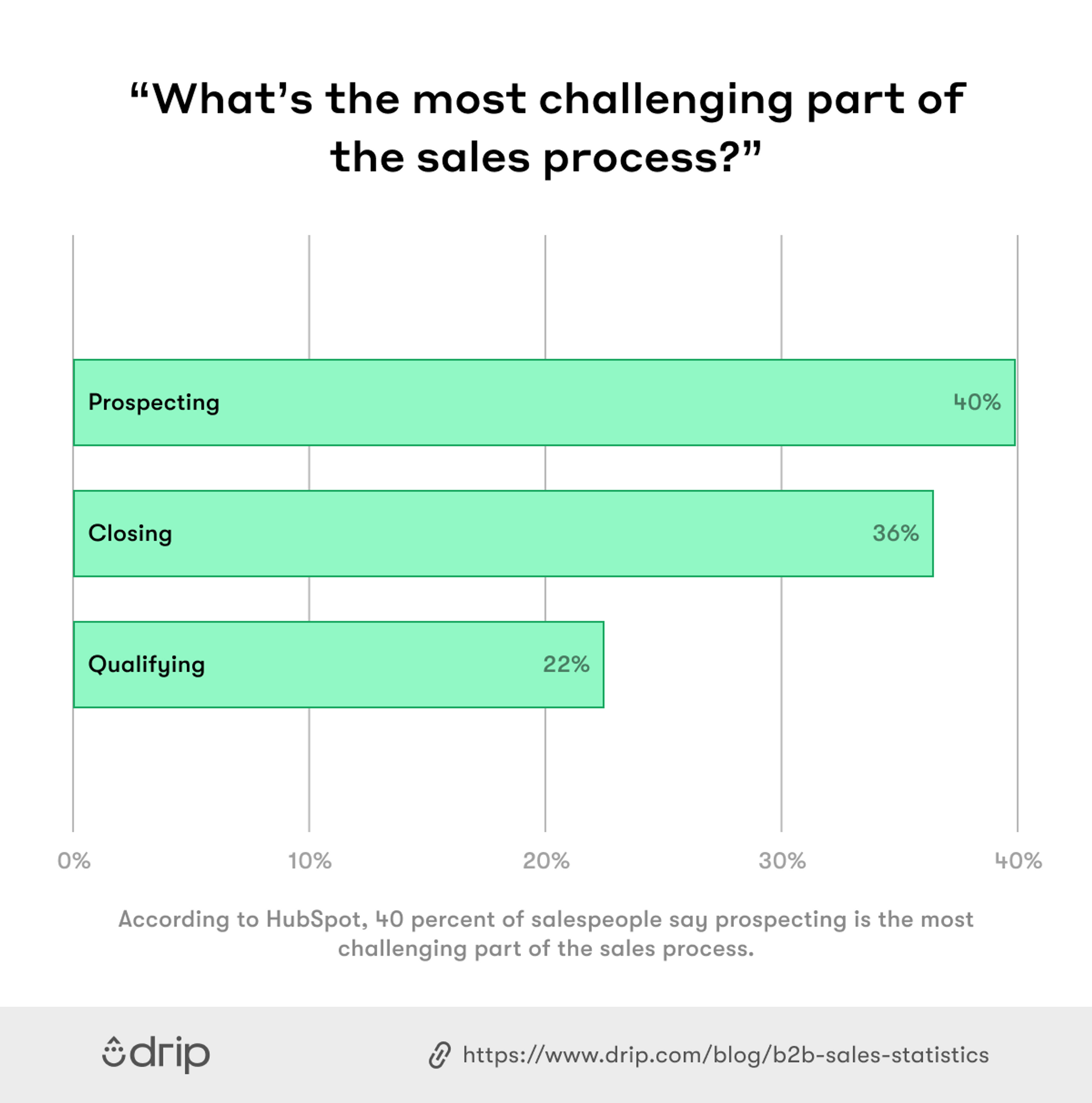
I think this would surprise a lot of non-salespeople; they’d expect the hardest part to be closing the deal. Putting yourself out there, asking for business, and risking getting shot down. Terrifying, right?
In reality, the closing was rated as the second most challenging part of the process (with 36 percent of the vote), followed by qualifying (22 percent).
2. 77 Percent of B2B Decision-Makers Say They’d Rather Meet With Vendors Via Video Than on a Phone Call
Imagining a B2B salesperson without a phone is like imagining a doctor without a stethoscope, or an artist without a paintbrush.
The telephone has traditionally played such a big role in B2B sales, it’s practically become synonymous with the whole profession. It’s used for prospecting, qualifying, nurturing, and sometimes even pitching and closing.
However, evidence suggests its time in the sun may be over.
Research from McKinsey reveals 77 percent of B2B decision-makers now prefer speaking to vendors via videoconference than on the phone.
It’s probably a little soon to be unplugging your telephone line once and for all.
But with 53 percent of marketers saying they see higher ROI from inbound activity (vs. only 16 percent who say the same about outbound), sales teams are spending more of their time speaking to warm leads, and less on cold prospects.
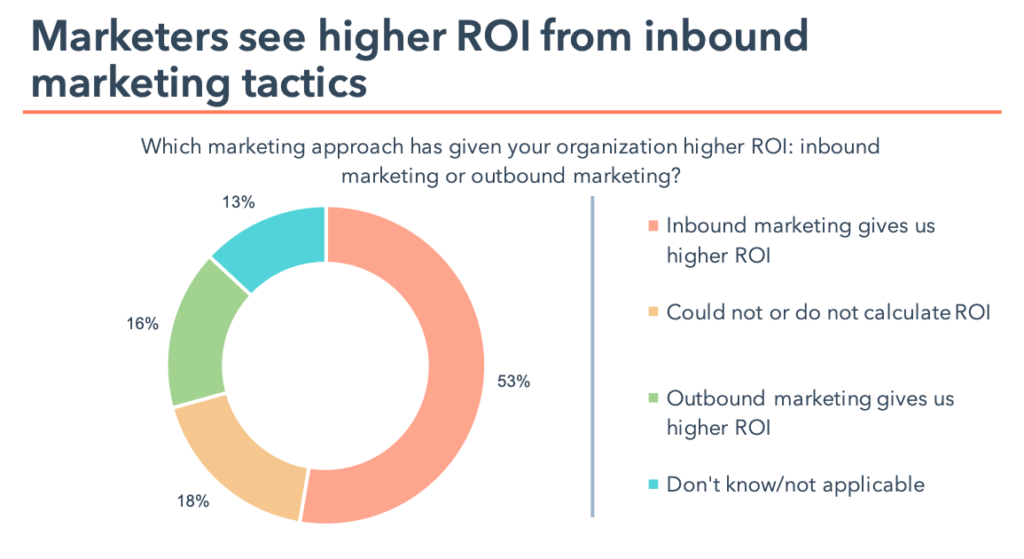
So it’s natural that more and more sales communications will shift to video.
3. At Least 50 Percent of Prospects Aren’t a Good Fit for What You Sell
Remember when I said prospecting was difficult?
Here’s another statistic that backs this up: the majority of salespeople say 50 percent or less of their initial prospects prove to be a good fit for their organization’s product or service.
This is really alarming.
To be clear, this stat isn’t saying that those prospects started out looking promising, but then ended up dropping off the radar.
It’s saying that half (or more) of prospects aren’t qualified to buy in the first place.
Now, think about all the touchpoints you have with the average prospect. They could include:
- An introductory call with your prospect;
- Follow-up emails to nurture their interest;
- A meeting between the prospect and production or delivery team members on your side; and
- Meetings with other decision-makers on the prospect’s side.
That’s before you even get to the pitch or product demo. It’s a big investment in time—and you can’t afford to spend it on the wrong prospects.
Part 2: Sales Technology Statistics
Where once, salespeople traveled door to door with a briefcase of product samples, today’s reps can access a vast range of technology to help them reach, engage, nurture, and sell to prospects. Here are three B2B sales technology stats you need to know.
4. 70 Percent of B2B Decision-Makers Are Open to Making New, Fully Self-Serve or Remote Purchases in Excess of $50,000
We all know prospects are time-poor. But that knowledge can lead us to some inaccurate conclusions.
Because they’re so busy, we assume prospects need salespeople to hold their hand through the entire sales process. That they won’t perform an action or reach a decision without being prompted at an in-person meeting.
However, the evidence doesn’t support this. In reality, B2B decision-makers actually crave greater autonomy in the buying process. And they’re happy to buy without a single face-to-face meeting.
More than two-thirds say they’d be prepared to spend over $50,000 on an entirely remote or self-service purchase.
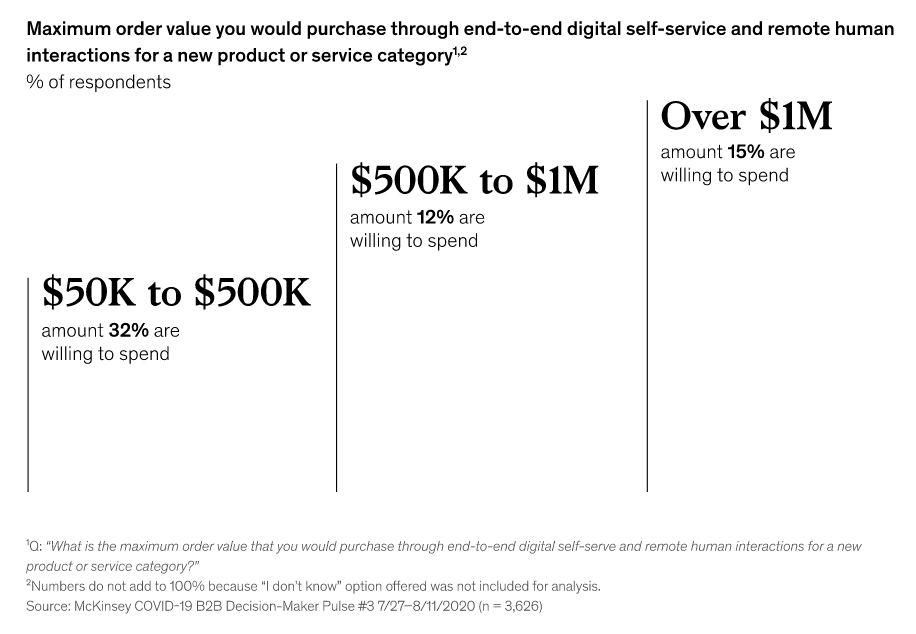
What’s more, 27 percent would spend over $500,000, and 15 percent would spend more than $1 million.
The lesson here is clear—buyers no longer expect you to meet them in person; videoconferencing is fine. And they’re happy to seize the initiative and commit to big purchases without speaking to a single salesperson.
5. 76 Percent of Salespeople Cite Sales Technology as “Critical” or “Extremely Critical” to Closing Deals
Technology makes sales teams more efficient. It helps them personalize their messaging, spend more time speaking to high-value prospects, and highlight key product features.
Salespeople are well aware of this, with three-quarters describing technology as “critical” or “extremely critical” to the all-important task of closing deals.
Clearly, I’m biased, but I’m a big advocate of using tech to streamline your sales process, generate more leads, and win more business.
Don’t just take my word for it, though. Oberlo used onsite campaigns to collect more than 5,000 email leads in less than a week.
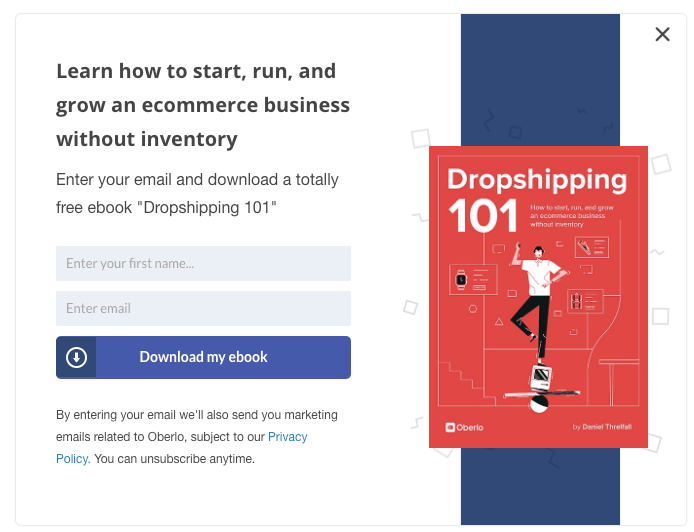
Part 3: B2B Buyer Experience Statistics
Delighting shoppers is at the heart of Amazon’s growth strategy—and it should be at the heart of yours, too. Give B2B decision-makers a fantastic experience and they’ll buy from you (and tell their friends). Here are three B2B buyer experience statistics to share with your team.
6. 77 Percent of B2B Buyers Say Their Latest Purchase Was Either “Difficult” or “Very Complex”
Generally speaking, the simpler the buying process, the better. That’s why Amazon is so successful. You can go from product to purchase in a single click.
Sure, B2B user journeys are more challenging. But that doesn’t mean they have to be frustrating and convoluted.
Unfortunately, Gartner says more than three-quarters of B2B buyers found their most recent purchase “difficult” or “very complex”.
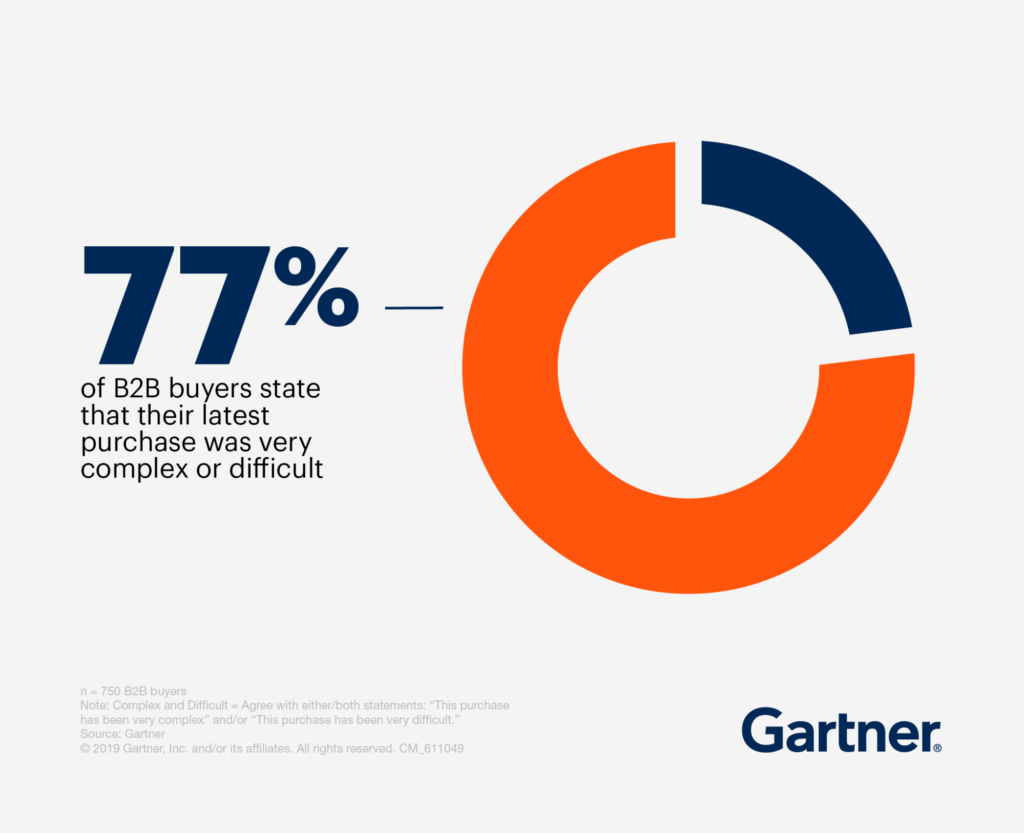
So what can you do about it?
According to Gartner, it’s all about sharing useful content. Buyers who find the information they receive from suppliers “helpful in advancing across their buying jobs” are:
- 2.8 times more likely to experience a high degree of purchase ease; and
- Three times more likely to buy a bigger deal with less regret.
7. 80 Percent of Frequent B2B Buyers Have Switched Suppliers at Least Once Within a 24-Month Period
Of course, the buyer experience doesn’t end the second you close a deal.
It continues through the onboarding process, to rolling out your product across an organization, to retaining, upselling, and cross-selling your customers.
Presumably, a lot of brands are getting this wrong, because four in five frequent B2B buyers say they’ve switched suppliers at least once during a two-year period.
That’s a nightmare for client relations teams. But it’s great news for sales, because it means there are more opportunities out there to poach customers from your rivals.
8. 76 Percent of B2B Buyers Now Expect More Personalized Attention from Solution Providers Based on Their Specific Needs
Would you ever buy from a company that referred to you as “Dear prospect”, or “Hi {firstname}”?
Probably not, right? And nor will your prospects.
The days of sending generic cold emails to hundreds or thousands of prospects at a time are well and truly over.
Today, savvy B2B buyers expect salespeople to treat them as individuals, not just another name on a mailing list. Indeed, 76 percent now demand more personalized attention from vendors, tailored to their specific goals and challenges.
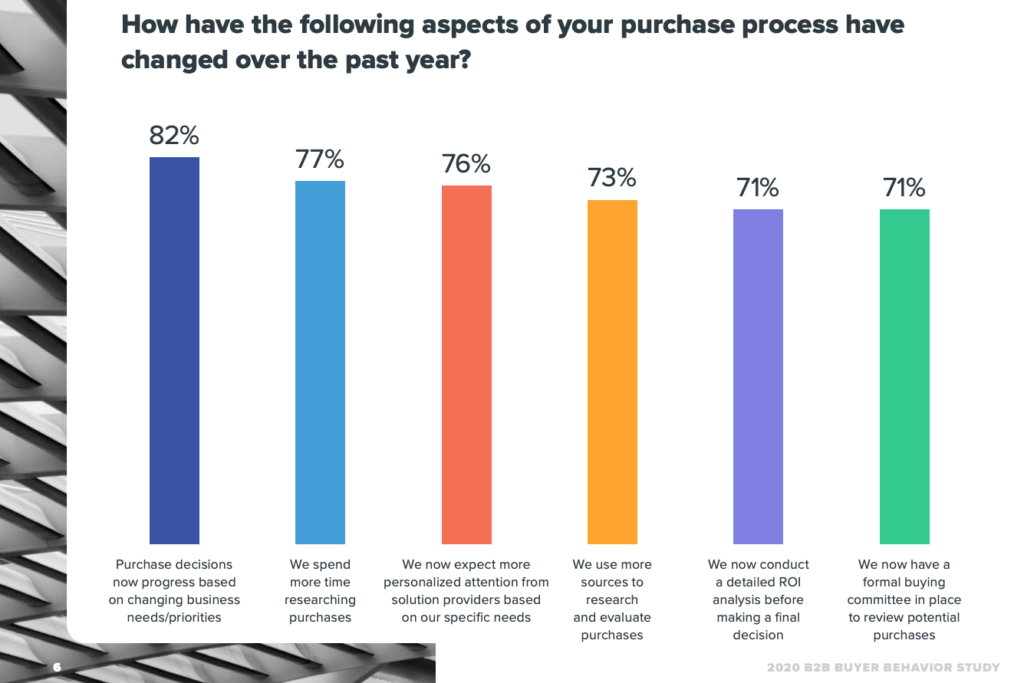
They don’t want to know about the generic features and benefits of your product–they want to know exactly how those features and benefits apply to their individual requirements.
Part 4: B2B Buying Statistics
Ever wished you could get inside the minds of your prospects? Longed to figure out why they made a certain decision, or what they needed to hear to sign off the deal? These next three statistics should help.
9. Competitive Pricing Is the Most Important Factor for a Majority B2B Buyers
We all like to imagine people buy from us because of our unparalleled customer service, or our exceptional product.
So it’s kind of disappointing to learn that a majority (27 percent) of B2B buyers say the biggest factor in their purchase decision is competitive pricing.
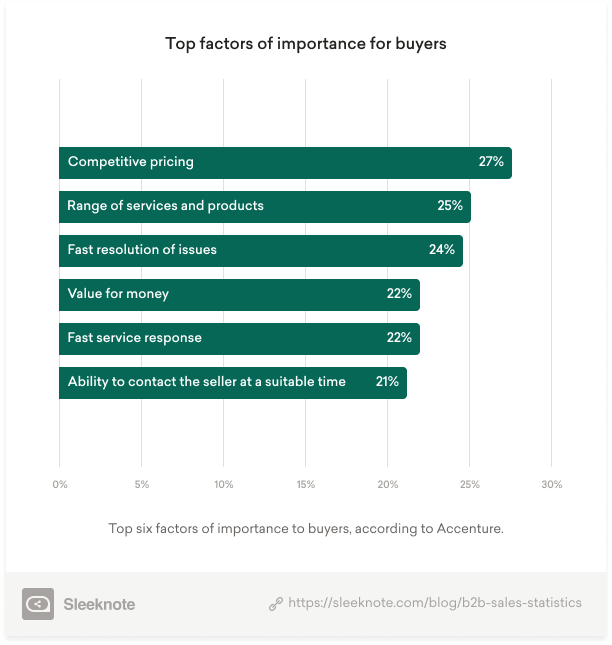
If it’s all about the money, why don’t we all stop trying to innovate or improve our products, and just slash our prices instead?
Fortunately, it’s not as simple as that, because pricing isn’t the runaway leader. A lot of other buying factors came close, namely:
- Having a broad range of flexible, high-quality products (cited by 25 percent of respondents);
- Offering fast resolution of issues (24 percent);
- Demonstrating value for money (22 percent);
- Providing speedy and efficient service response (22 percent); and
- Allowing buyers to contact the vendor at a time that suits them (21 percent).
In other words, price is important. But if it’s your only selling point, don’t expect to close many deals.
10. 88 Percent of B2B Buyers Only Buy When They See a Salesperson as a “Trusted Advisor”
One of the biggest challenges faced by salespeople is that buyers hate being sold to.
They don’t want to be contacted out of the blue, rushed into making a decision, or interrogated about their business goals.
So it’s no surprise that 88 percent of B2B buyers will only buy if they view the rep as a trusted advisor. They’re simply not interested in doing business with self-interested, commission-obsessed salespeople.
“No problem,” you might think. “None of my salespeople are like that.”
Sadly, your buyers probably disagree, because just 32 percent describe sales as a trustworthy profession.
More than ever, you need to focus on building strong, trusting relationships with buyers. Offer to advise, add real value and be open and honest in every interaction.
11. 60 Percent of Customers Say “No” Four Times Before Saying “Yes”
What separates the best salespeople from the also-rans?
There are lots of things. It might be their confidence and ability to put clients at ease. It might be their knowledge. It might be their empathy.
Or it might be none of the above. Often, all that divides the best from the rest is persistence—the desire to make one more call, type one more email, or send one more connection request.
Persistence pays in sales because 60 percent of buyers say “no” four times before they say “yes”.
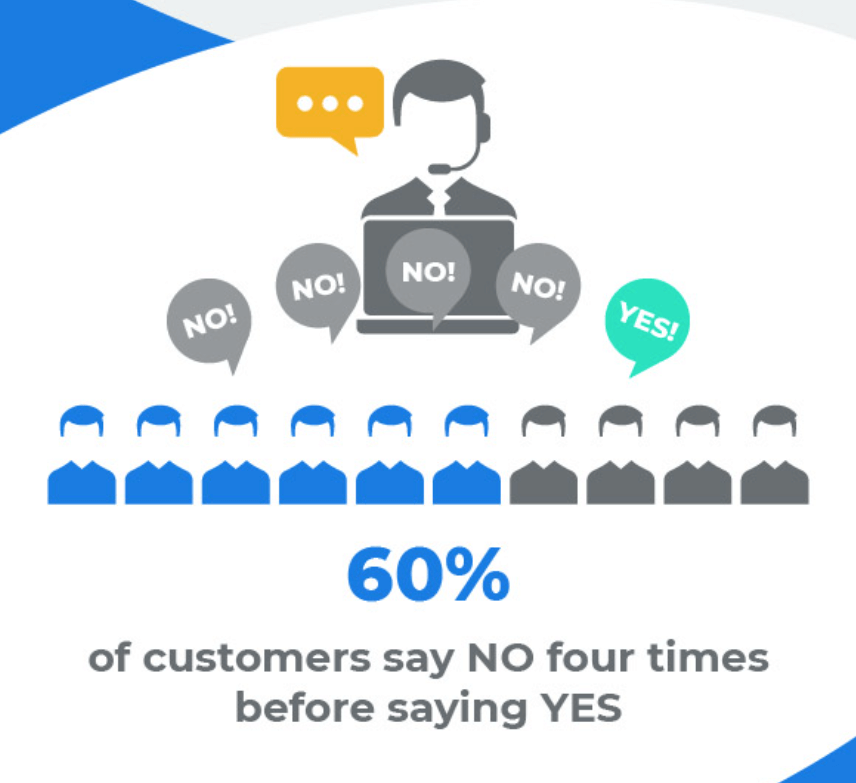
In our heart of hearts, we probably all know this is true. We might have experienced it ourselves. Yet astonishingly, almost half of the salespeople never make a single follow-up attempt.
No one’s suggesting you should hound buyers until they’ve blocked you on every channel. But if you’re genuinely confident a prospect will benefit from your product, don’t be so easily dissuaded.
Conclusion
In a lot of ways, B2B sales have changed dramatically in recent years.
Sales technology has become commonplace. Buyers have become more demanding, and expect bespoke sales messaging personalized to their needs.
But in other ways, it’s the same as it ever was. The best sales teams are still those that:
- Identify the right prospects;
- Build strong relationships with their leads; and
- Are on hand to offer advice and support when necessary.
This was true last year, it’ll be true next year, and it’ll still be true in 50 years.



